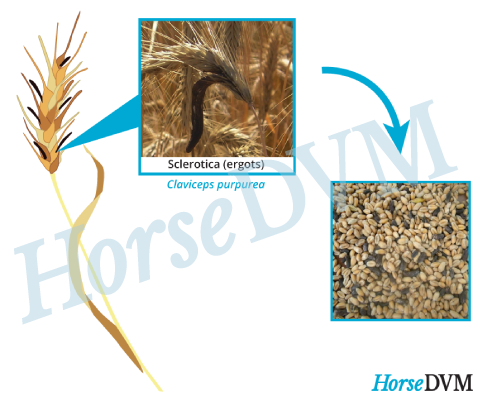 Attention! This is a potentially life-threatening condition for your horse. Time is of the essence, contact your veterinarian immediately.Find a Vet
Attention! This is a potentially life-threatening condition for your horse. Time is of the essence, contact your veterinarian immediately.Find a Vet
Ergot Poisoning, Summer Syndrome

| Form | Description |
|---|---|
| Gangrenous or cutaneous | Associated with long-term ingestion of ergot-contaminated feedstuff. Results in the restriction of blood flow to parts of the body, causing tissue death, sloughing and foul odor from rotting flesh. |
| Hyperthermic | Affects the temperature regulation of the body. Affected horses are unable to cool themselves during high temperatures. It is associated with long-term ingestion of ergots. |
| Reproductive | Results in reproductive failure, abortion, and the ability of mares to lactate. Mares often birth small, unthrifty, or stillborn offspring. Sometimes offspring are born without any suckling reflex. |
| Convulsive | The result of acute ingestion of large amounts of ergots in a short period of time. It is the rarest form, and causes hyperexcitability, bizarre behavior, convulsions and death. |